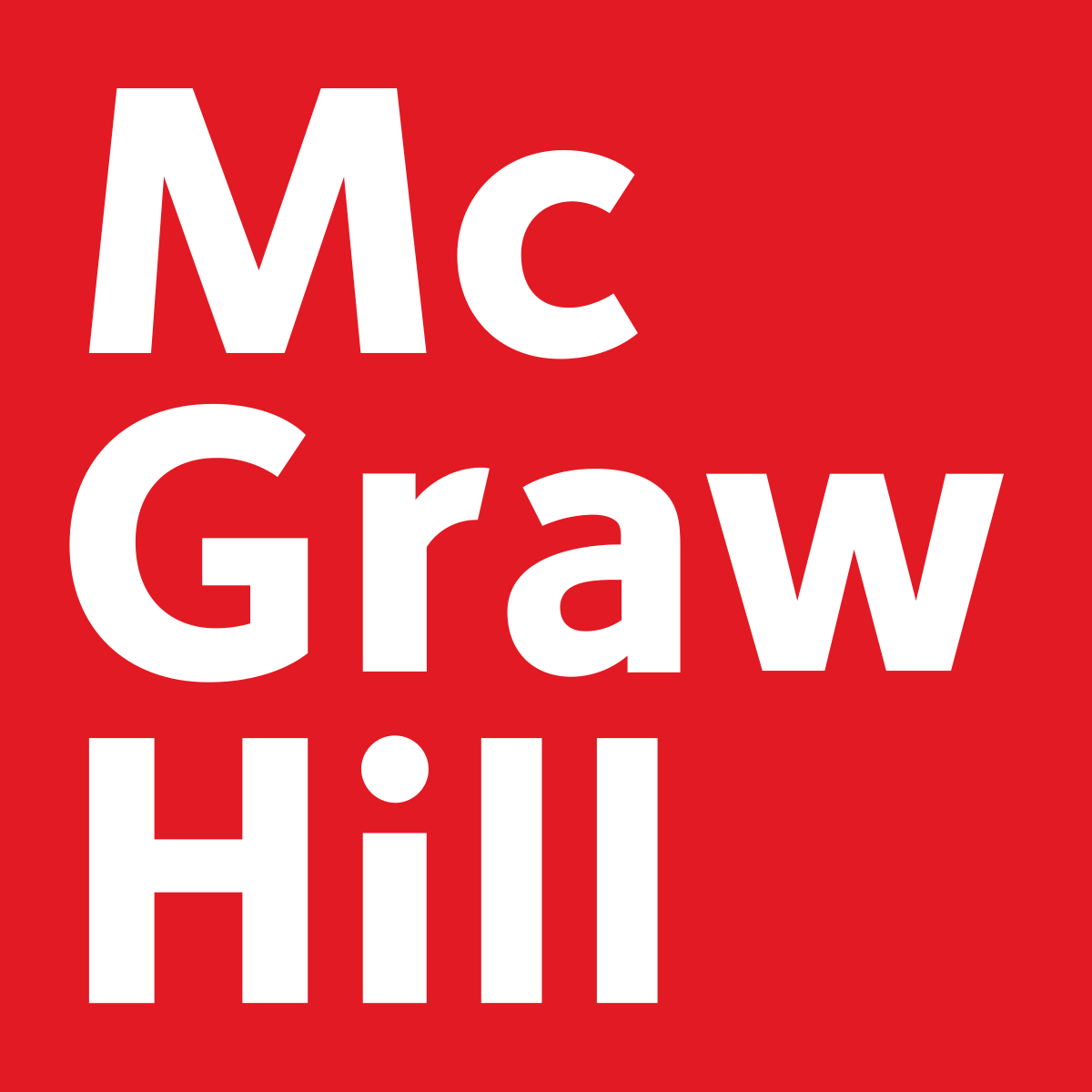La orientación al aprendizaje, al mercado y su impacto en los resultados empresariales: un análisis con modelo de ecuaciones estructurales
DOI:
https://doi.org/10.37467/gka-revsocial.v8.1974Palabras clave:
mercado, aprendizaje, emprendimiento, innovación, ventaja competitivaResumen
En la presente investigación se explica la relación de dos capacidades empresariales: la orientación al mercado y su influencia en la orientación al aprendizaje y, ambos, en los resultados de las pequeñas y medianas industrias del sector de “Alimentos y Bebidas”, en Ecuador. Con el objetivo que este tipo de organizaciones logren un rendimiento organizacional competitivo en el Ecuador. Una herramienta para que las pequeñas y medianas industrias logren operar en el mercado a largo plazo debido a que se desarrollarán competencias que generarán resultados más eficientes y por tanto una mayor ventaja competitiva.
Descargas
Estadísticas globales ℹ️
|
735
Visualizaciones
|
192
Descargas
|
|
927
Total
|
|
Citas
Argyris, C. (1977). Double loop learning in organizations. Harvard Business Review, 55(september–october), pp. 115–125.
Argyris, C., Schön; D. (1978). Organization learning. Addison–Wesley, USA. DOI: https://doi.org/10.2307/2392441
Baker, W.E., Sinkula, J.M. (1999a). Learning orientation, market orientation, and innovation: integrating and extending models of organizational performance. Journal of Market Focused Management, 4(4), pp. 295–308.
Baker, W.E., Sinkula, J.M. (1999b). The synergistic effect of market orientation and learning orientation on organizational performance. Journal of the Academy of Marketing Science, 27(4), pp. 411–427. DOI: https://doi.org/10.1177/0092070399274002
Baker, W.E., Sinkula, J.M. (2002). Market orientation, learning orientation and product innovation: delving into the organization’s black box. Journal of Market Focused Management, 5, pp. 5–23. DOI: https://doi.org/10.1023/A:1012543911149
Campbell, D.T., Fiske, D.W. (1959). Convergent and discriminant validation by the multitrait–multimethod matrix. Psychol. Bull, 56(2), pp. 81–105. DOI: https://doi.org/10.1037/h0046016
Cardona, J., Calderón G. (2006). Internet: teorías de aprendizaje. Revista Institucional Entre Comillas, 3, pp. 15–16.
Covin, J.G., Slevin, D.P. (1989). Strategic management of small firms in hostile and benign environments. Strategic Management Journal, 10(1), pp. 75–87. DOI: https://doi.org/10.1002/smj.4250100107
Covin, J.G., Slevin, D.P., Covin, T.J. (1990). Content and performance of growth seeking strategies: a comparison of small firms in high and low technology industries. Journal of Business Venturing, 5, pp. 391–412. DOI: https://doi.org/10.1016/0883-9026(90)90013-J
Covin, J.G., Green, K.M., Slevin, D.P. (2006). Strategic process effects on the entrepreneurial orientation–sales growth rate relationships. Entrepreneurship Theory and Practice, 30(1), pp. 57–81. DOI: https://doi.org/10.1111/j.1540-6520.2006.00110.x
Cronbach, L.J. (1951) (originally developed by Louis Guttman in 1945). Coefficient alpha and the internal structure of tests. Psychometrika, 16, pp. 297–334. DOI: https://doi.org/10.1007/BF02310555
Damanpour, F., Gopalakrishnan, S. (1989). Theories of organizational structure and innovation adoption: the role of environmental change. Journal of Engineering and Technology Management, 15(1), pp. 1–24. DOI: https://doi.org/10.1016/S0923-4748(97)00029-5
Damanpour, F., Szabat, K.A., Evan, W.M. (1989). The relationship between types of innovation and organizational performance. Journal of Management Studies, 26(6), pp. 587–601. DOI: https://doi.org/10.1111/j.1467-6486.1989.tb00746.x
Day, G.S. (1994a). The capabilities of market–driven organizations. Journal of Marketing, 58, pp. 37–52. DOI: https://doi.org/10.1177/002224299405800404
Day, G.S. (1994b). Continuous learning about markets. California Management Review, 36(4), pp. 9–31. DOI: https://doi.org/10.2307/41165764
Deshpandé, R., Farley, J.U., Webster, F.E. Jr. (1993). Corporate culture, customer orientation, and innovativeness in Japanese firms: a quadrad analysis. Journal of Marketing, 57(january), pp. 23–37. DOI: https://doi.org/10.1177/002224299305700102
Deshpandé, R., Farley, J.U. (1998). Measuring market orientation generalization and synthesis. Journal of Market Focused Management, 2(3), pp. 213–232. DOI: https://doi.org/10.1023/A:1009719615327
Duchesneau, D.A., Gartner, W.B. (1990). A profile of new venture success and failure in an emerging industry. Journal of Business Venturing, 5, pp. 297–312. DOI: https://doi.org/10.1016/0883-9026(90)90007-G
Esteban, A., Campos, M., Molina C. (2002). Market orientation in service: a review and analysis. European Journal of Marketing, 36(9–10), pp. 1003–1021. DOI: https://doi.org/10.1108/03090560210437307
Eusebio, R., Llonch, A.J., López Belbeze, M.P. (2004). Learning orientation and market orientation: moderating effects and consecuences. 33th European Marketig Academy Conference (EMAC). Murcia, Vol. may, pp. 18–21.
Gallo, J.G. (2017). Impacto de la orientación al mercado y el desarrollo de capacidades empresariales en los resultados de las pequeñas y medianas industrias ecuatorianas. (tesis doctoral sin publicar). Facultad de Ciencias Económicas. Universidad Nacional de Córdoba.
Gallo, J.G. (2017). La orientación al mercado, el dinamismo del entorno y la tipología estratégica de la pequeña y mediana industria: un análisis mediante modelo de ecuaciones estructurales. INNOVA Research Journal, 2(8), pp. 64–85, Recuperado de http://www.journaluidegye.com/magazine/index.php/innova/article/view/342 DOI: https://doi.org/10.33890/innova.v2.n8.1.2017.342
Farrell, M.A. (2000). Developing a market–oriented learning organization. Australian Journal of Management, 25(2), pp. 201–222. DOI: https://doi.org/10.1177/031289620002500205
Farrell, M.A., Oczkowski, E. (1997). An analysis of the ΜΚΤΟR and ΜΑRΚΟR measures of market orientation: an Australian perspective. Marketing Bulletin, 8, pp. 30–40.
Farrell, M.A., Oczkowski, E. (2002). Are market orientation and learning orientation necessary for superior organizational performance? Journal of Market Focused Management, 5, pp. 197–217. DOI: https://doi.org/10.1023/A:1022990622706
Gallo, J.G. (2017). Impacto de la orientación al mercado y el desarrollo de capacidades empresariales en los resultados de las pequeñas y medianas industrias ecuatorianas. (tesis doctoral sin publicar). Facultad de Ciencias Económicas. Universidad Nacional de Córdoba.
Greenley, G. (1995). Market orientation and company performance: empirical evidence from UK companies. British Journal of Management, 6(December), pp. 1–13. DOI: https://doi.org/10.1111/j.1467-8551.1995.tb00082.x
Hair, J.F. Jr., Anderson, R.E., Tatham, R.L., Black, W.C. (1998). Multivariate Data Analysis. Upper Saddle River, NJ: Prentice Hall.
Hebel, M. (2007). Light bulbs and change: systems thinking and organizational learning for new ventures. The Learning Organization, 14(6), pp. 499–509. DOI: https://doi.org/10.1108/09696470710825114
Hult, G.T.M., Hurley, R.F., Knight, G.A. (2004). Innovativeness: its antecedents and impact on business performance. Industrial Marketing Management, 33(5), pp. 429–438. DOI: https://doi.org/10.1016/j.indmarman.2003.08.015
Hult, G.T.M., Ketchen, Jr. D., Slater, S.F. (2001). Does market orientation matter?: A test of the relationship between positional advantage and performace. Strategic Management Journal, 22(9), pp. 899–906. DOI: https://doi.org/10.1002/smj.197
Hunt, S.D., Morgan, R.M. (1995). The comparative advantage theory of competition. Journal of Marketing, 59(2), pp. 1–15. DOI: https://doi.org/10.1177/002224299505900201
Hurley, R.F., Hult, G.T.M. (1998). Innovation, market orientation and organizational learning: an integration and empirical examination. Journal of Marketing, 62(3), pp. 42–54. DOI: https://doi.org/10.1177/002224299806200303
Jaworski, B.J., Kohli, A.K. (1993). Market orientation: antecedents and consequences. Journal of Marketing, 57(3), pp. 53–70. DOI: https://doi.org/10.1177/002224299305700304
Jaworski, B.J., Kohli, A.K., Sahay, A. (2000). Market–driven versus driving market. Journal of the Academy of Marketing Science, 28(1), pp. 45–54. DOI: https://doi.org/10.1177/0092070300281005
Jaworski, B.J., Maccinnis, D.J., Kohli, A.K. (2002). Generating competitive intelligence in organizations. Journal of Market Focused Management, 5(4), pp. 279–307. DOI: https://doi.org/10.1023/B:JMFM.0000008071.19917.36
Kakati, M. (2003). Success criteria in high–tech new ventures. Technovation, 23, pp. 447–457. DOI: https://doi.org/10.1016/S0166-4972(02)00014-7
Kennedy, K.N., Goolsby, J.R., Arnould, E.J. (2003). Implementing a customer orientation: extension of theory and application. Journal of Marketing, 67, October, pp. 67–81. DOI: https://doi.org/10.1509/jmkg.67.4.67.18682
Kirca, A., Jayachandran, S., Bearden, W. (2005). Market orientation: a meta analytic 224 review and assessment of its antecedents and impact on performance. Journal of Marketing, 69, pp. 24–41. DOI: https://doi.org/10.1509/jmkg.69.2.24.60761
Kohli, A.K., Jaworski, B.J. (1990). Market orientation: the construct, research propositions and managerial implications. Journal of Marketing, 54(2), pp. 1–18. DOI: https://doi.org/10.1177/002224299005400201
Kohli, A.K., Jaworski, B.J., Kumar, A. (1993). ΜΑRΚΟR a measure of market orientation. Journal of Marketing Research, 30(4), pp. 467–477. DOI: https://doi.org/10.1177/002224379303000406
Kotler, P., Cámara, D., Grande, I., Cruz, I. (2000). Dirección de Marketing. Madrid, España: Pretince Hall Iberia.
Levitt, T. (1983). After the sale is over… Harvard Business Review, 61(5), pp. 87–93.
Lind, A., Marchal, G., Wathen, S. (2012). Statistical Technics in Business & Economics. Mexico: McGraw–Hill.
Llonch, A.J. (1993). Orientación al mercado y competitividad de la empresa. (Barcelona: EADA Gestión).
Llonch, A.J., Waliño, S., (1996). Efectos de la orientación al mercado en los resultados de la empresa. Revista Española de Investigación de Marketing ESIC, No. enero–marzo, pp. 9–39.
Llonch, A.J., López Belbeze, M.P., Eusebio, R. (2005). La relación entre la orientación al aprendizaje y la orientación al mercado. XI Congreso Nacional de ACEDE. San Cristóbal de la Laguna (Tenerife). Recuperado de http://www.acede.org
María, D.M., Bojica, A.M., Fuentes, F. (2012). Knowledge acquisition and corporate entrepreneurship: insights from Spanish SMEs in the ICT sector. Journal of World Business, 47(3), pp. 397–400. DOI: https://doi.org/10.1016/j.jwb.2011.05.007
McNeal, J.U., Lamb, C.W. (1980). Marketing orientation in nonprofit sector: the case of hospital. Journal of the Academy of Marketing Science, 8(1), pp. 26–32. DOI: https://doi.org/10.1007/BF02721969
Morgan, R.E., Strong, C.A. (1998). Market orientation and dimensions of strategic orientation. European Journal of Marketing, 32(11/12), pp. 1051–1073. DOI: https://doi.org/10.1108/03090569810243712
Naman, J.L., Slevin, D.P. (1993). Entrepreneurship and the concept of fit: a model and empirical tests. Strategic Management Journal, 14, pp. 137–153. DOI: https://doi.org/10.1002/smj.4250140205
Narver, J.C., Slater, S.F., MacLachlan, D.L. (2004). Responsive and proactive market orientation and new−product success. The Journal of Product Innovation Management, 21, pp. 334–347. DOI: https://doi.org/10.1111/j.0737-6782.2004.00086.x
Narver, J.C., Slater, S.F. (1990). The effect of a market orientation on business profitability. Journal of Marketing, 54(4), pp. 20–35. DOI: https://doi.org/10.1177/002224299005400403
Narver, J.C., Slater, S.F., Tietje, B. (1998). Creating a market orientation. Journal of Market Focused Management, 2, pp. 233–236. DOI: https://doi.org/10.1023/A:1009747516235
Nunnally, J.C. (1978). Psychometric theory. New York: McGraw−Hill, N.Y.
Pelham, A.M. (1997). Mediating influences on the relationship between orientation and profitability in small industrial firms. Journal of Marketing Theory and Practice, 5(3), pp. 1–23. DOI: https://doi.org/10.1080/10696679.1997.11501771
Pelham, A.M. (1999). Influence of environment, strategy, and market orientation on performance in small manufacturing firms. Journal of Business Research, 45(1), pp. 33–46. DOI: https://doi.org/10.1016/S0148-2963(98)00026-5
Ruekert, R.W. (1992). Developing a market orientation: an organizational strategy perspective. International Journal of Research in Marketing, 9, pp. 225–245. DOI: https://doi.org/10.1016/0167-8116(92)90019-H
Ruiz, M.A., Pardo, A., San Martín, R. (2010). Modelos de Ecuaciones Estructurales. Papeles del Psicólogo, 31(1), pp. 34–45.
Santos, M.L., Sanzo, M.J., Álvarez, L.I., Vázquez, R. (2002a). El aprendizaje organizativo y la orientación al mercado como recursos empresariales: interacciones y efectos sobre la competitividad. Revista Española de Investigación de Marketing ESIC. Vol. 6, No. 1, pp. 7–36.
Santos, M.L., Sanzo, M.J., Álvarez, L.I., Vázquez, R. (2005a). Organizational learning and market orientation: interface and effects on performance. Industrial Marketing Management, 34, pp. 187–202. DOI: https://doi.org/10.1016/j.indmarman.2004.08.004
Santos, M.L., Sanzo, M.J., Álvarez, L.I., Vázquez, R. (2005b). Effects of market orientation on business strategic behaviour. Journal of Strategic Marketing, 13, pp. 17–42. DOI: https://doi.org/10.1080/0965254042000328677
Shapiro, B. (1988). What the hell is market–oriented? Harvard Business Review, november–december, pp. 119–125.
Sinkula, S.F. (1994). Market information procesing and organizational learning. Journal of Marketing, 58(1), pp. 35–45. DOI: https://doi.org/10.1177/002224299405800103
Sinkula, J.M., Baker, W., Noordewier, T.G. (1997). A framework for market–based organizational learning: linking values, knowledge and behaviour. Journal of the Academy of Marketing Science, 25(Fall), pp. 305–318. DOI: https://doi.org/10.1177/0092070397254003
Slater, S.F. (1995). Issues in conducting marketing strategy research. Journal of Strategic Markering, 3(4), pp. 257–270. DOI: https://doi.org/10.1080/09652549500000016
Slater, S.F. (2001). Market orientation at the begining of a new millenium. Managing Service Quality, 11(4), pp. 230–233. DOI: 10.1108/EUM0000000005609 DOI: https://doi.org/10.1108/EUM0000000005609
Slater, S.F., Narver, J.C. (1992). Superior customer value and business performance: the strong evidence for a market–driven culture. Marketing Science Institute. Report No. 92–125. Citado en Lafferty, B.A., Hult, G.T.M. (2001). A synthesis of contemporary market orientation perspectives. European Journal of Marketing, 35(1–2), pp. 92–109. DOI: https://doi.org/10.1108/03090560110363364
Slater, S.F., Narver, J.C. (1995). Market orientation and the learning organization. Journal of Marketing, 59(3), pp. 63–74. DOI: https://doi.org/10.1177/002224299505900306
Slater, S.F., Narver, J.C. (2000). The positive effect of a market orientation and business profitability: a balanced replication. Journal of Business Research, 48(1), pp. 69–73. DOI: https://doi.org/10.1016/S0148-2963(98)00077-0
Slater, S.F., Olson, E.M. (2001). Marketing’s contribution to the implementation of business strategy: an empirical analysis. Strategic Management Journal, 22, pp. 1055–1067. DOI: https://doi.org/10.1002/smj.198
Staples, D.S., Greenaway, K., McKeen, J.D. (2001). Opportunities of research about managing the knowledge–based entrerprise. International Journal of Marketing Reviews, 3, pp. 1–20. DOI: https://doi.org/10.1111/1468-2370.00051
Song, M., Podoynitsyna, K., Van der Bij, H., Halman, J.I.M. (2008). Success factors in new ventures: a meta–analysis. The Journal of Product Innovation Management, 25, pp. 7–27. DOI: https://doi.org/10.1111/j.1540-5885.2007.00280.x
Tuominen, M., Rajala, A., Möller, K. (2004). Market–driving versus market–driven: divergent roles of market orientation in business relationships. Industrial Marketing Management, 33(3), pp. 207–217. DOI: https://doi.org/10.1016/j.indmarman.2003.10.010
Trespalacios, J., Vázquez, R., Bello, L. (2005). Investigación de mercados: métodos de recogida y análisis de la información para la toma de decisiones de marketing. España. Ediciones Paraninfo.
Vila, N., Küster, I., Aldás, J. (2000). Desarrollo y validación de escalas de medida en marketing. Universitat de València, p. 64. Recuperado de http://www.uv.es/aldas/resources/Docencia/URV/3.Apuntes_ESC.pdf
Walker, O.C., Ruekert, R.W. (1987). Marketing’s role in the implementation of business strategies: A critical review and conceptual framework. Journal of Marketing, Vol. 51, No. 3, pp. 15–33. DOI: https://doi.org/10.1177/002224298705100302
Webster, F.E. Jr. (1988). Rediscovering the marketing concept. Business Horizons, 31(May–June), pp. 29–39. DOI: https://doi.org/10.1016/0007-6813(88)90006-7
Weston, R., Gore, P.A. (2006). A brief guide to structural equation modeling. The Counseling Psychologist, 34(5), pp. 719–751. DOI: https://doi.org/10.1177/0011000006286345
Weerawardena, J., O’Cass, A., Julian, C. (2006). Does industry matter? examining the role of industry structure and organizational learning in innovation and brand performance. Journal of Business Research, 59, pp. 37–45. DOI: https://doi.org/10.1016/j.jbusres.2005.02.004
Wrenn, B. (1997). The market orientation construct: measurement and scaling issues. Journal of Marketing Theory and Practice, 5(3), pp. 31–54. DOI: https://doi.org/10.1080/10696679.1997.11501770
Wu, L.Y. (2007). Entrepreneurial resources, dynamic capabilities and start–up performance of Taiwan’s high–tech firms. Journal of Business Research, 60, pp. 549–555. DOI: https://doi.org/10.1016/j.jbusres.2007.01.007
Descargas
Publicado
Cómo citar
Número
Sección
Licencia
Los autores/as que publiquen en esta revista aceptan las siguientes condiciones:
- Los autores/as conservan los derechos de autor.
- Los autores/as ceden a la revista el derecho de la primera publicación. La revista también posee los derechos de edición.
- Todos los contenidos publicados se regulan mediante una Licencia Atribución/Reconocimiento-SinDerivados 4.0 Internacional. Acceda a la versión informativa y texto legal de la licencia. En virtud de ello, se permite a terceros utilizar lo publicado siempre que mencionen la autoría del trabajo y a la primera publicación en esta revista. Si transforma el material, no podrá distribuir el trabajo modificado.
- Los autores/as pueden realizar otros acuerdos contractuales independientes y adicionales para la distribución no exclusiva de la versión del artículo publicado en esta revista (p. ej., incluirlo en un repositorio institucional o publicarlo en un libro) siempre que indiquen claramente que el trabajo se publicó por primera vez en esta revista.
- Se permite y recomienda a los autores/as a publicar su trabajo en Internet (por ejemplo en páginas institucionales o personales), una vez publicado en la revista y citando a la misma ya que puede conducir a intercambios productivos y a una mayor y más rápida difusión del trabajo publicado (vea The Effect of Open Access).













